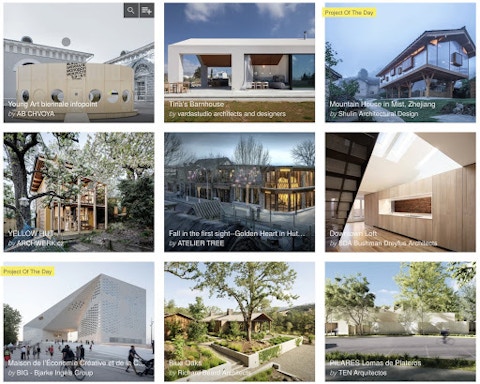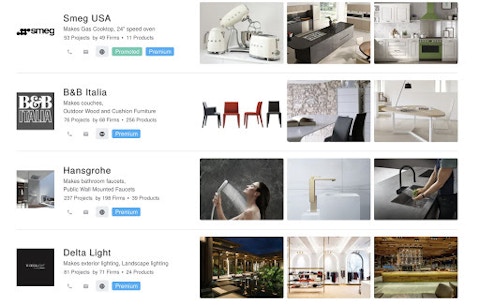More About This Show
The Smarter Building Materials Marketing podcast helps industry professionals find better ways to grow leads, sales and outperform the competition. It’s designed to give insights on how to create a results-driven digital marketing strategy for companies of any size.
In this episode, Zach and Beth talk with David Weber, CEO of Architizer, about why it is so hard to sell to architects and provide strategies that building materials manufacturers can leverage to help win the spec.

How Architects Do Business Today
The way architects work and spec products has changed, especially in the last year. Now more than ever, professionals in the building materials industry rely on digital tools and resources to get work done.
“One of the big things that have changed over the last year is that there's a lot more digital collaboration,” says David. “Architects no longer can pass a magazine around the office. They no longer have access to their in-house product library.”
From communication on projects to designing for a project, much of an architect’s work takes place digitally, especially now that we’re not working in offices as often.
“So they're relying a lot more on websites, digital resources, manufacturer's websites in order to do their work, and a lot more on digital collaboration tools to communicate with each other and to share work,” explains David.
From the adoption of BIM software to Zoom meetings, collaboration on today’s construction projects happens online.
“No one can do a pinup the way they were before, cover the ball with all these photos, talk through it, mark things up with a red pen,” says David. “All of that has to be done digitally.”
Even before we all went virtual during the pandemic, Architizer recognized the value of online marketing and offers a digital showroom of products, projects and tools for architects to create the buildings and spaces we love.
Architizer also helps architects and designers find inspiration and resources by connecting them with the best products the industry has to offer.
Appealing To Architects Online
So what can manufacturers do to get their products in front of architects and connect with them virtually?
“I think when manufacturers position products, I think they really need to think about their products as part of a story,” explains David. “This is what we always work with, any partners when they're working with us, to promote their products within the Architizer ecosystem is to really think about the narrative of your products.”
The most important question a manufacturer can ask is, “How can your product help solve some sort of problem?”
Approaching architects with a solution for their specific project is key for manufacturers to stand out, especially when it comes to positioning your products online.
“I think that context is something that you can never really lose sight of, and the most effective products I think for architects are products that present themselves within the context of a larger entity within the project,” explains David.
One way a manufacturer can help provide content is through product photography. In order to stimulate the imagination of an architect or a designer, David recommends a manufacturer use shots of products in the wild.
“The story you tell, and the story of the photo should really put a product in context, because that's what's going to trigger the architect to understand more fully how the product can be used and take that piece and move it into another context more readily,” explains David.

Building Tangible Trust (in a Digital Landscape)
Manufacturers today don’t just need a website, but an actual online presence. David explains that product manufacturers “need to be extremely accessible at the moment the architect might have a question.”
“If they're trying to figure out something about your product and it's really hard, you can imagine it again, how easy it is for them with the lack of time and the complexity in the universe for them to just push in a spec that they've used before,” he says.
While some architects drive innovation in the construction industry, most aren’t likely to try out a new product they don’t have any experience with: ”If that material fails and the standards weren't appropriate, there's a huge exposure for the architect,” explains David. “So I think that this is part of what makes architects extremely risk-averse, and why there's such a pervasive amount of sort of cut and pasting of specs within the industry.”

But manufacturers can be proactive, especially when it comes to the online presence of your brand. “You want to get in there, help consult on the design, get your product firmly entrenched,” says David. He offers a few quick tips for getting (and staying) in front of architects.
Know your customer’s questions before they ask them.
Your website can do a lot of legwork for you, especially when it comes to an FAQs page or chat function on your site. David suggests that manufacturers invest in their marketing strategy, to help attract and nurture leads who land on your site. “Have those funnels in place to drive people to you when they're like, ‘Oh, I have a question about recess lighting in a wet environment.’” It’s important that you’re ready, when they’re looking for those answers.
Act like the expert you are.
Giving your website visitors more opportunities to learn about your product and its applications is another great way to establish trust. “I think that providing consultative advice on the area of subject matter expertise that you have — like if you're a brick manufacturer, being able to answer any questions about brick — whether or not your product ends up winning or not, that's how you build that trusted role: that you're the first phone call when those problems come up,” says David. “And that’s your opportunity to get specs.”
Partner with them on projects (even when you don’t win the sale).
Being a resource to architects shopping for products will score big points with them over the long run. “So helping them understand the context of the decision, but then also being an advocate to work with them throughout the entire process,” explains David. “Because there's nothing worse than expecting something that ultimately can't get delivered on time, and then gets cut from the project because the contractor is like, ‘Oh, that's going to take 15 more weeks to get here from Europe.’”
It’s definitely a long game, especially with longer lead times in the construction industry today. “And in a society of immediacy, we have to be willing to say we might lose some at the onset, but we're going to win a long game,” says David. “If they see you as a helpful guide, people want to work with people. They want to work with people they trust and you're building that rapport. And so you might not win that project today, but you'll definitely win it for a lifetime.”
What To Expect in the Industry: Looking Ahead
The construction industry has seen changes over the last few years, especially in the digital landscape. David also sees a shift in what customers will expect to see in building and home design.
“I think when there is new construction, the way in which architects are designing is changing because the ways people imagine their homes are changing,” suggests David.
Since we’ve all been spending more time in our homes, we’re looking for a bit more flexibility in that familiar space. “If you're trapped at home with three kids, what you want is a little bit of modularity and the ability to maybe close off some space, to break the space up.”
He explains further: “You won't have a big 12’ by 15’ room, but some of those bedrooms will be essentially predesigned to be office space.”
And architects are already thinking of how commercial spaces might look different, from public transit to sports arenas, especially after a global pandemic made these high-traffic spaces feel less-than-safe.

“I think that architects, they're very thoughtful. They're very creative and I think they have a really important role that they take very seriously — as sort of our bidder for sort of helpfulness and care for the environment, both in the macro sense and the micro sense of the space,” says David. “And so they have a lot of weight and responsibility on their shoulders to create a helpful, positive, effective space that meets the needs of those users and the environment surrounding it.”
Want Even More Insight?
Getting in front of architects might feel a little daunting for manufacturers; the competition is certainly fierce in an already challenging industry. But Architizer gives product manufacturers a leg up: every brand gets a free profile, with the opportunity to share products on the site and connect with thousands of architects who are looking for solutions for their projects, on a daily basis.
Learn more about Architizer by listening to the full episode here or emailing David at [email protected].
If you have additional questions about how you sell to architects let us know! Shoot us an email at [email protected].





